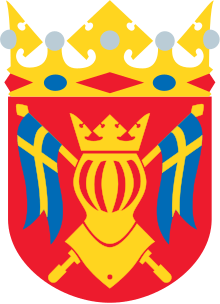Finns proper
Finns proper (from Swedish Finnar or egentliga Finnar, Finnish: Varsinaissuomalaiset) are a historic people and a modern subgroup (heimo) of the Finnish people. They live in areas of the historical province of Finland Proper (Varsinais-Suomi) and speak Southwestern dialects of Finnish. Finns proper had very early strong connections to Scandinavia.[1]

Originally, the exonym "Finland" and the endonym "Suomi" referred only to the Southwestern region inhabited by Finns proper. Later, the meaning of these names expanded to refer to the whole area of modern Finland. Earlier, the name "Finn" meant Sami people, especially in older Norse sagas.[2]
The Russian name Сумь, 'Sum', which appears in Novgorodian chronicles, is believed to refer to Finns proper. "Sums" are mentioned as allies of Swedes at the Battle of Neva at 1240.[3]
See also
- Tavastians
- Baltic Finns
References
- Palmunen, Lauri (toim.): Varsinais-Suomen käsikirja – Egentliga Finlands handbok. Turku: Varsinais-Suomen liitto, 2009
- Hermann Pálsson (1999): The Sami People in Old Norse Literature.
- "Description of the battle in the First Novgorod Chronicle". Archived from the original on 2007-09-27.; in Swedish. Hosted by the narc.fi. See Arkistolaitos/sahkoiset Archived June 8, 2007, at the Wayback Machine and Diplomatarium Fennicum from the menu. See also original text; in Russian.
| Articles of the – Finnish people – its subgroups and its diaspora |
|---|
| Traditional groups (or "heimot") |
|
Tavastians | Karelians | Savonians | Finns proper | Swedish-speakers |
| Diaspora |
|
Finnish Americans | Finnish Canadians | Ingrian Finns (Savakot, Äyrämöiset) | Sweden Finns (Tornedalians, Forest Finns) | Kvens | Finnish Argentines | Finnish Australians | Finnish Brazilians | Finns in Switzerland |